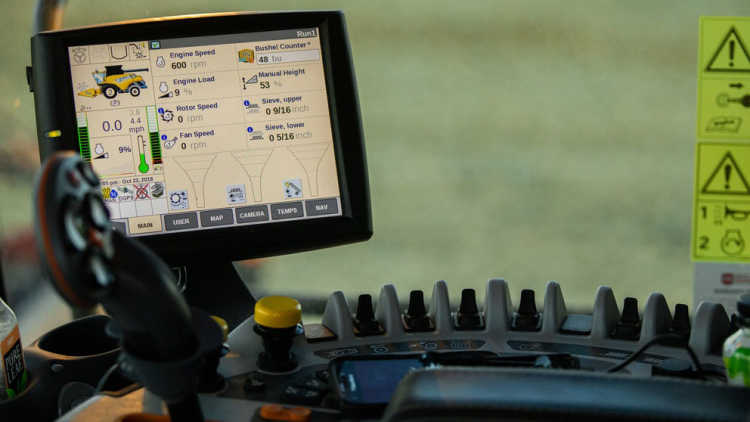How to make adopting new farm tech work for you

A successful technology strategy has nothing to do with how many innovations are on your farm. You can have a very successful approach to technology without using many or any new products or processes. To me, true tech success involves the following steps:
Knowing and understanding what’s available, both in ag and elsewhere
Spotting emerging technologies or innovations that may solve specific problems on your farm
Running a realistic cost-benefit and payback analysis
Conducting small-scale trials when possible
Implementing the winners and monitoring closely
If a farmer says to me, “I’ve done the research and crunched the numbers and it’s just not a fit for us,” it speaks to a successful tech strategy. If someone says they have no use for a specific technology based on a negative attitude and assumptions, I think that’s a failing strategy. It’s equally flawed to get caught up in the hype surrounding something new and jumping in, hoping for the best.
We are all at risk of being overwhelmed by innovation and change
It’s easy to rattle off a five-step plan for tech success, but the reality is that we are all at risk of being overwhelmed by innovation and change. Before we even start on Step 1, we have to resist the urge to check out and simply stay with what we are currently doing. Hindsight is revealing. How many of us remember stating boldly, “I will never need a smartphone or auto-steer or robotic milker or use social media or apps….” Staying open-minded is a big part of tech success.
Step 1: Know and understand
Knowing and understanding what’s available is a big one and it requires a commitment to paying attention, being curious and investing some time. I think we should all be paying attention to artificial intelligence and what it means for robotics and autonomous machinery. Understanding how algorithms are improving rapidly to pull more value from data is another big game changer. But the truth is that we can bite-size this step and get started by focusing in on what’s realistic and relevant for our operations.
If energy efficiency in your greenhouse is your biggest challenge, start there. If it’s finding labour for your apple orchard, start investigating robotics. If it’s communication within your staff, explore project management apps like Slack that make it easy to keep everyone on the same page. You’ll find that as you start monitoring one technology, your interests will broaden to include a wider range of topics.
Steps 2 and 3: Spot new tech, run the numbers
These steps tend to happen in concert. I know that GPS enabled auto-shut-off technology for planter units and sprayer boom sections offers at least three per cent in seed and crop protection product savings. I’ve spotted the tech that can solve the problem of overlapped planting and wasted spray, especially in my odd-shaped fields. It works. Now I need to crunch the numbers to determine what the payback period is based on the acres I cover. Sometimes new tech is expensive, but it gets cheaper over time as it becomes more mainstream. What may not pencil out today may be a no-brainer in two years.
Step 4: Small-scale trials
This step encourages small trials or learning with others before making a major commitment to something new. It’s not always possible, but becoming comfortable with a new technology by doing trials or learning along with others can lower the cost and speed up the process. Some companies like to work with innovators willing to try bleeding-edge tech. Farm organizations often support research too. Olds College in Alberta has initiated the Smart Farm program. They insert new technologies into a working 2,000-acre farm so that students and farmers can get an indication of how things like soil monitors, digital weather stations, and fully Wi-Fi-enabled smart devices perform in the real world. The point is maybe you don’t have to go it alone.
Step 5: Implement and monitor
Once you do the research, crunch the numbers, and run some on-farm trials, it’s on to Step 5: inserting the innovation into the operation and monitoring how it works. There is a tendency to stop evaluating just how strong or weak the new equipment, software or process is performing once we write the cheque to buy it. We’re committed, so why would we want to know if it’s not measuring up to expectations?
We can generate data like never before so there is no excuse for forging ahead blindly. No one wants to have to walk away from a new technology they’ve committed to. But even if you do all the research, analysis and testing, sometimes it’s just not a winner and backing away is the right decision for the farm.
It’s not overstating to say that attitude and commitment are key to Step 5. You can work through the first four steps and feel like you’ve identified an innovation that could make a difference on your farm, but if your partners or staff are not on board, it’s difficult to garner the benefits. Change is disruptive and there will be times when everyone wishes they’d never started implementing the new gear. Working through those issues to give the new tech the best opportunity to live up to expectations is part of the process.
Don’t be overwhelmed. Focus and bite-size your technology strategy to address your challenges. Take it one step at a time.
From an AgriSuccess article by Peter Gredig.

A drive to succeed, a strong work ethic and incorporation of global innovation trends gives a mushroom farmer the edge he needs – and $50 million in annual sales.